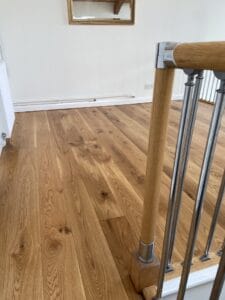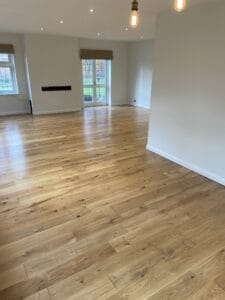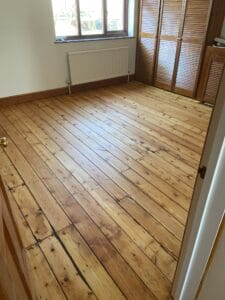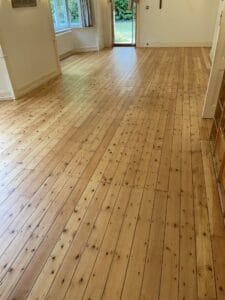Are you living in Newmarket, Suffolk, and wondering if your charming wooden floors are oak or pine? It’s a common question among homeowners, especially those with restored or older properties. Let’s look into how you can tell if your floors are oak or pine in Newmarket so you can identify what lies beneath your feet.
Hardwood vs. Softwood: The Basic Difference
Understanding the difference between softwoods and hardwoods is the first step. Surprisingly, it’s not about the literal hardness of the wood but rather the tree’s growth patterns. Hardwoods like oak are from trees that grow in the summer and become dormant in the winter, shedding their leaves. Softwoods, like pine, grow continuously throughout the year. This growth pattern influences the wood’s consistency and appearance.
Characteristics of Oak and Pine wood floors in Newmarket
Now, let’s talk specifics. Oak is a hardwood known for its durability and beautiful grain. Pine, a softwood, is known for its softer texture and distinctive, often orangey hue.
Oak Wood Floors


- Colour and Grain: Oak typically exhibits a range of natural, golden hues. The grain is usually straight and pronounced, adding character to the floor.
- Durability: Oak is a resilient hardwood that handles wear and tear better than its softwood counterparts.
- Knots: While knots are present, they tend to be less pronounced than in pine wood floors.
Pine Wood Floors


- Colour and Characteristics: Pine floors often have a more orangey tone. The knots are generally larger and more noticeable, contributing to its rustic charm.
- Texture: As a softwood, pine is naturally softer and may show indentations more easily, especially in older or Victorian-style homes.
- Variety: There are different types of pine, some harder than others, but typically, pine used in modern homes is softer.
Observational Differences
Identifying oak and pine can often be done visually. Oak floors usually have a more uniform, golden tone and a straighter grain. Pine floors, on the other hand, display a more orange hue and larger knots. These characteristics are key in differentiating the two.
Importance of Knowing Your Floor Type
Why is it important to know whether your floors are oak or pine? The answer lies in maintenance and restoration. Each wood type reacts differently to finishes and treatments. For instance, lacquer on pine might enhance its natural, lighter colour, while oil treatment could bring out a darker, orange tone. Understanding your floor type allows you to make informed decisions about treatments and expect realistic outcomes.
Testing for Certainty
While visual inspection can give you a good idea, the only way to be 100% sure of your floor type is through professional testing. This involves the microscopic examination of a wood sample. While it’s an extra step, it provides definitive answers, which is especially important for specific restoration projects or when dealing with unique or mixed wood floors.
Beauty and History of Your Floors in Newmarket: Oak vs. Pine Preservation Tips
In the picturesque town of Newmarket, whether you’re in a heritage property or a modern home, knowing your floor type – oak or pine – is more than just an aesthetic preference. It’s about preserving the character and longevity of your floors. Consulting a professional is always a wise move if you’re still uncertain or considering a restoration project.
Remember, your floors are not just a foundation for your home; they’re a piece of its history and character. Whether it’s the sturdy oak or the charming pine, each has its story to tell. So, take a closer look at your floors today and embrace the beauty beneath your feet!
This YouTube explains all in this article, and if you would rather watch this than read it… click below, and off you go!



